For this week’s post, I am in Russell Square in Bloomsbury, just north of Holborn Station. At 73 Russell Square was the Librairie Internationale and my father took three photos of this location in 1953. I suspect this may have been to capture people walking past and entering the shop. The three photos are shown below:
The location is easy to find and is on the corner of Russell Square and Guilford Street. A new building is on the site and rather than the Librairie Internationale, the site is now occupied by a Pret. The buildings on the left in Guildford Street remain unchanged.
It has been a challenge to find out more about the Librairie Internationale and any information would be greatly appreciated.
From what references I can find, the Librairie Internationale appears to have been somewhat of a Communist / Anarchist bookshop perhaps associated with the anarchist bookshops of the same name in France in the 19th Century (again, this is very sketchy information, so any corrections or further information would be appreciated).
I have found references to the Librairie Internationale selling copies of Karl Marx publications in the 1920s and in the 1930s as one of the bookshops in London where you could purchase pamphlets such as those produced by the London Freedom Group, whose paper “Freedom – A Journal of Libertarian Thought, Work And Literature” included the address of the Librairie Internationale in Russell Square as one of the London bookshops and newsagents where Freedom could be purchased.
Freedom makes interesting reading. It was published by the London Freedom Group and had an editorial address at 163 Jubilee Street, Mile End.
Despite being something of an anarchist publication, Freedom has a very polite tone. The issue of January 1931 contains an obituary of a Mrs Dryhurst and reads:
“Mrs N.F. Dryhurst’s smiling, charming face was, since the late 80’s, noticeable at all meetings of the Anarchist cause, speaking, debating, handing out bills, or going round with the collection plate; nothing was too much or too little for her to do.
In ‘Freedom’ she occupied a most important position: often editing while Mrs. Wilson was away; writing up notes and comments on contemporary events; corresponding with comrades all over the country; getting them to send up reports of propaganda; putting ship-shape all their notices and reports.
With her command of foreign languages she was able to render great service to ‘Freedom’ in translating and reviewing works; while her inborn Irish humour added charm to all her writing.
I cannot but recall with feelings of deep gratitude how Mrs. Dryhurst, during those years, would in spite of her middle-class education and upbringing, cordially interest herself in and render help to every comrade of the most down-trodden class who was fortunate enough to come in contact with her.”
In the correspondence section there is a letter from the Polish Anarchist Committee which reads:
“The Committee of Polish Anarchists abroad wish to inform all those comrades who desire to get into contact with us that our new address for correspondence and money is Madam Andree Peche, 15 Rue du Faubourg, Saint-Denis, Paris.”
I have ready many books and documents in researching articles for my blog and I am often struck by words that have been written many decades ago which you could also find being written today.
Take the following paragraphs from an article in Freedom of January 1931, 86 years ago this month.
“It has been pointed out that just as the old individualist capitalist is passing away, becoming, in the face of International Capitalism, merely a kind of rudimentary organ in a newer and world-wide industrial system, so national governments become more and more helpless to remedy unemployment. They belong to a passing era.
Still, in spite of the impotence of governments, the present slump, like previous ones, will liquidate itself largely at the expense of the workers, and be followed by a boom period, in which the lessons of the present will be largely forgotten unless we are able to increase our propaganda and keep them alive. As soon as the boom appears, financial operations in industry – now passing more and more into the hands of the big banks and international financiers – will be busy transforming industrial undertakings wherever they are ripe for it, into international concerns.”
Echoes today of the way that international concerns treat taxation and the inability of individual governments to exercise control.
Probably unfair to base a view of the Librairie Internationale on the contents of one publication that could be purchased at the shop in 1931 – however I have been able to find very little information about this book shop.
When my father took these photos in 1953, global politics were entering a very new era compared to the 1930s and I wonder if the Librairie Internationale was still selling the types of publication available pre-war. Looking at the detail in my father’s photos it looks very much like a normal bookshop / newsagent.
Around the door are copies of American magazines including Life and Colliers Magazine and in the shop there are large maps on display along with signs advertising Easter Cards, Book Tokens and a sign to “Scatter Sunshine With Greeting Cards”, along with pictures of Queen Elizabeth II.
In the entrance to the shop, it is just possible to make out lettering on the pavement.
The same sign (or perhaps a later reproduction) remains to this day at the entrance to Pret. The Turkish Baths that the sign is pointing to were a short distance away from the Librairie Internationale, in the original Imperial Hotel.
There is still an Imperial Hotel in Russell Square, although the existing building replaces the original which was demolished in 1966 and was the home of the Turkish Baths Arcade. View of the current Imperial Hotel from opposite Pret.
The full view of the Imperial Hotel.
The original Imperial Hotel was design by Charles Fitzroy Doll and built between 1905 and 1911. View of the Imperial Hotel in the 1960s before demolition:
Hermione Hobhouse in her book Lost London from 1971 writes the following about the Imperial Hotel:
“The Imperial Hotel was demolished in 1966, partly because of its lack of bathrooms, and partly because, in the words of the G.L.C., ‘the whole frame….was so structurally unsound that there was no possibility of saving it if a preservation order had been placed on the building.’ It may have been a victim, too, of the time-lag in official taste – it is interesting to see that in 1970-1 the owners of the Russell Hotel, a similar but less extravagant terracotta building designed by Doll in 1898, now on the statutory list of historic buildings, are spending £1 million on restoration, rather than just demolishing and rebuilding.”
The Russell Hotel (now called The Principal London) is still on Russell Square but when I visited the Square the majority of the building was covered in scaffolding and plastic sheeting so very little of the building was visible.
Having found the location of the Librairie Internationale I took a walk around Russell Square in the gradually fading light of a sunny December afternoon.
The Square, and Bloomsbury in general, needs a far more detailed description of this fascinating area, however here is an introduction.
Russell Square is the large square in the upper section of the map below, and Bloomsbury Square is in the lower right. Originally Bedford House looked onto Bloomsbury Square and the house and gardens covered the area now occupied by the land in between Russell and Bloomsbury Square and part of Russell Square.
Bedford House was the London home of the Dukes of Bedford and in 1800, the 5th Duke, Sir Francis Russell ordered the demolition of Bedford House and arranged for the land of northern Bloomsbury to be developed with the architect James Burton responsible for much of the design. Russell Square was the centre piece of this development and the garden was designed by the landscape gardener Humphrey Repton.
Repton published Observations on the Theory and Practice of Landscape Gardening in 1803 which covered both his ideas on landscape gardening, but also how landscape and architecture should be seamlessly integrated. The book is fascinating and shows the level of detail that went into designing gardens in the 8th and 19th Centuries. The following illustration from the book shows how spectators at different points in a landscape would see a different view:
John Rocque’s map of 1746 shows Bedford House and gardens north of Bloomsbury Square. The exact location of Russell Square can be identified by comparing with the location of Bloomsbury Square and, on the right, Queen’s Square.
The following print (©Trustees of the British Museum) was published in 1822 (from an original drawing purchased at the sale in Bedford House) and shows Bedford House. the text reads:
“This Mansion which for more than a Century was the Town residence of the noble Family of Russel Earls and Dukes of BEDFORD: was built under the direction of the celebrated Architect Inigo Jones on the site of an ancient Mansion called Southampton House belonging in 1667 to Lady Rachel Vaughan, who married Wm. Lord Russell and by this Union conveyed the Estate, including the ground on which Montague House, now the British Museum was built to the Russell Family. In the year 1800 Bedford House was taken down, and upon the site of the Mansion House and Gardens a number of large Houses called Bedford Place and Montague Street were erected by Francis the late Duke of Bedford.”
Walking up Bedford Place from Bloomsbury Square (which takes you through where the house and gardens once stood) you arrive at Russell Square with the statue of Francis Russell, 5th Duke of Bedford, standing at the edge of the gardens looking down to where his house once stood.
The following print (©Trustees of the British Museum) from 1830 shows the statue of the Duke of Bedford in Russell Square with a group of people gathered to watch a puppet show on the road in front of the statue.
The gardens were restored in 2002 to Repton’s original design.
Russell Square House on the northern side of the square.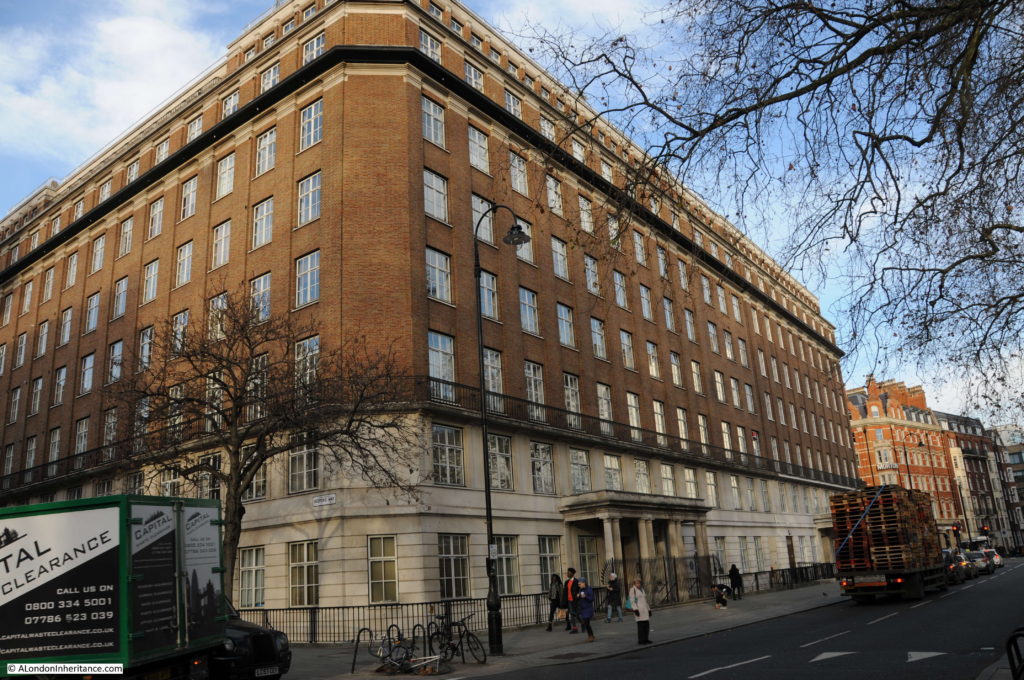
This building is on the site of a terrace of houses in one of which lived Sir George Williams, founder for the YMCA which is now recorded by a blue plaque on the front of the building.
Terrace of buildings on the northwest corner of Russell Square. I like the symmetry of the terrace above the ground floor (with the exception of one window on the roof). Not sure why this symmetry did not extend to the ground floor.
On the far right of the above terrace there is the plaque shown in the photo below commemorating Sir Samuel Romilly as a one time resident. Romilly had a distinguished career in the legal profession and was also the MP for Queensborough, but was mainly known for his reforming work by abolishing many of the penalties which were still considered a capital offence.
On the north-western side of the square is a run of relatively modern buildings in a neo-Georgian style. These are on the site of a terrace of Georgian buildings built soon after 1800 and designed by James Burton. The new buildings were built in this style after so much of Georgian Bloomsbury had been destroyed by the University of London.
The Senate House building of London University seen between a gap in the buildings along the western edge of Russell Square.
Original Georgian Terrace on the south-west corner of Russell Square:
Terrace on the south-west corner adjacent to the junction with Montague Street:
At the corner of Bedford Place with Russell Square is this relatively modern building.
Above the entrance to this building is a plaque which was on the original house on the site from the time of the development of Russell Square, recording that Lord Denman, the Lord Chief Justice of England lived in the original house on the site between 1816 and 1834. The plaque on the left records that the original house had stood on the site from 1800 to 1962.
By the time I had walked around the square, the sun was getting very low and casting the whole of the square into a late winters afternoon shadow, however the sun was now picking out details at roof level which included a number of superb chimney pots including the ones in the following photo.
I am pleased I have found the location of the Librairie Internationale, although I am still unsure of the history of the shop and I have been unable to find any reference to when it opened or closed. Any information on the Librairie Internationale would be really appreciated.
It was fascinating researching Russell Square as it illustrates the problem I have with writing a weekly post. One photo opened up anarchist organisations in London, the development of Bloomsbury and landscape gardening, a rather interesting mix in just one of London’s many squares.

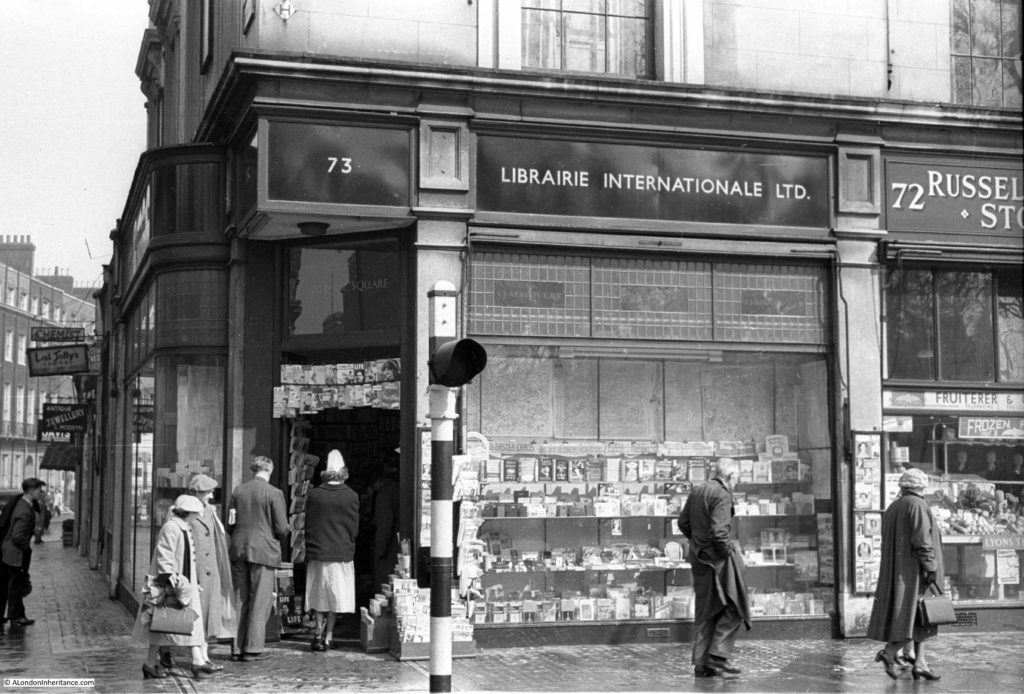
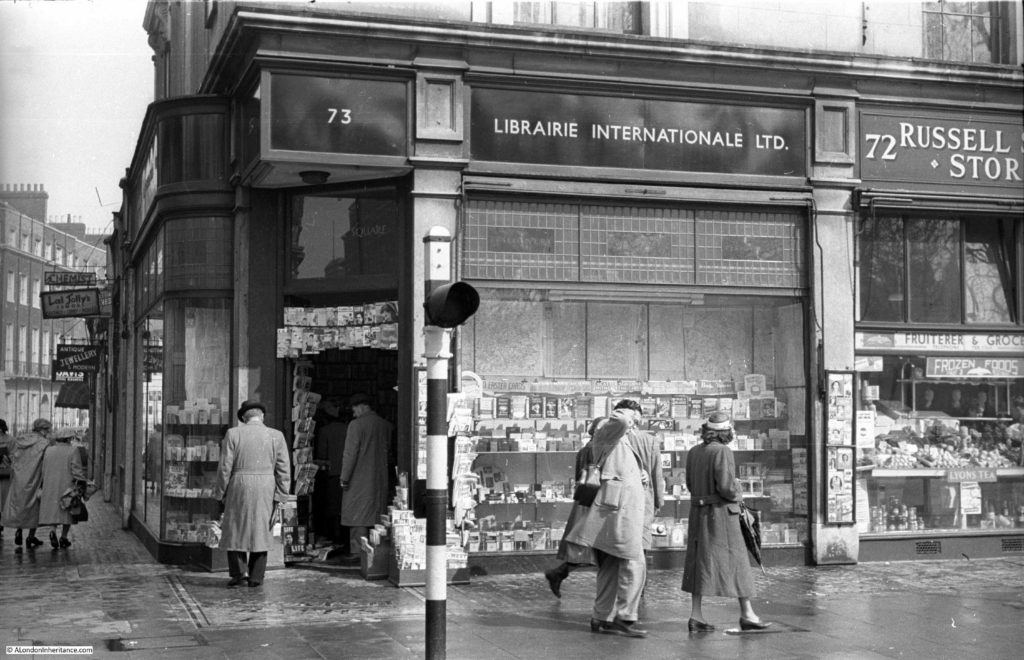
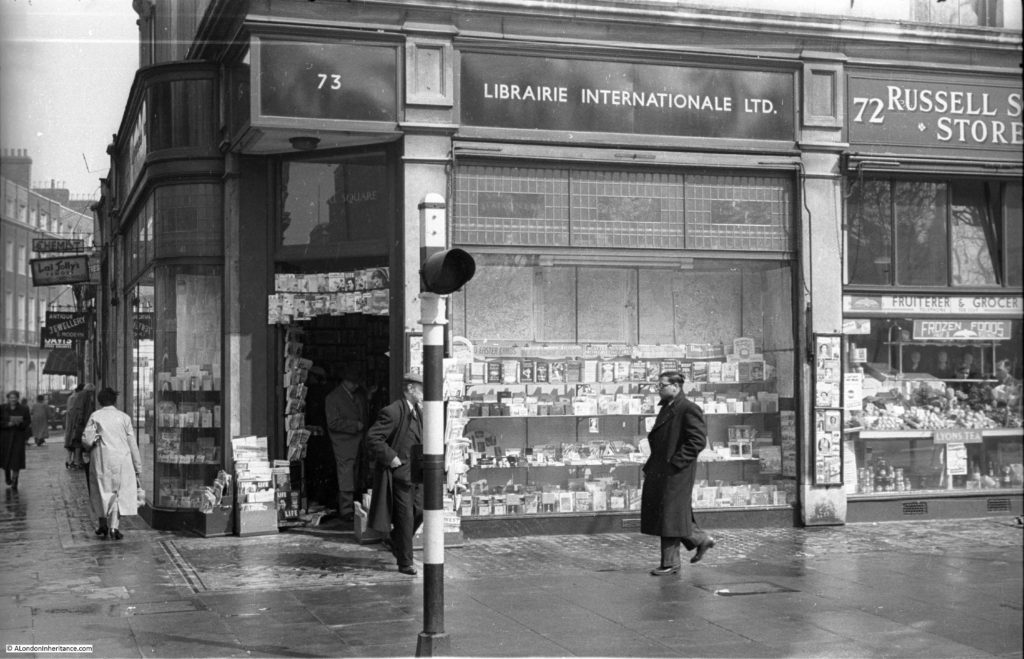
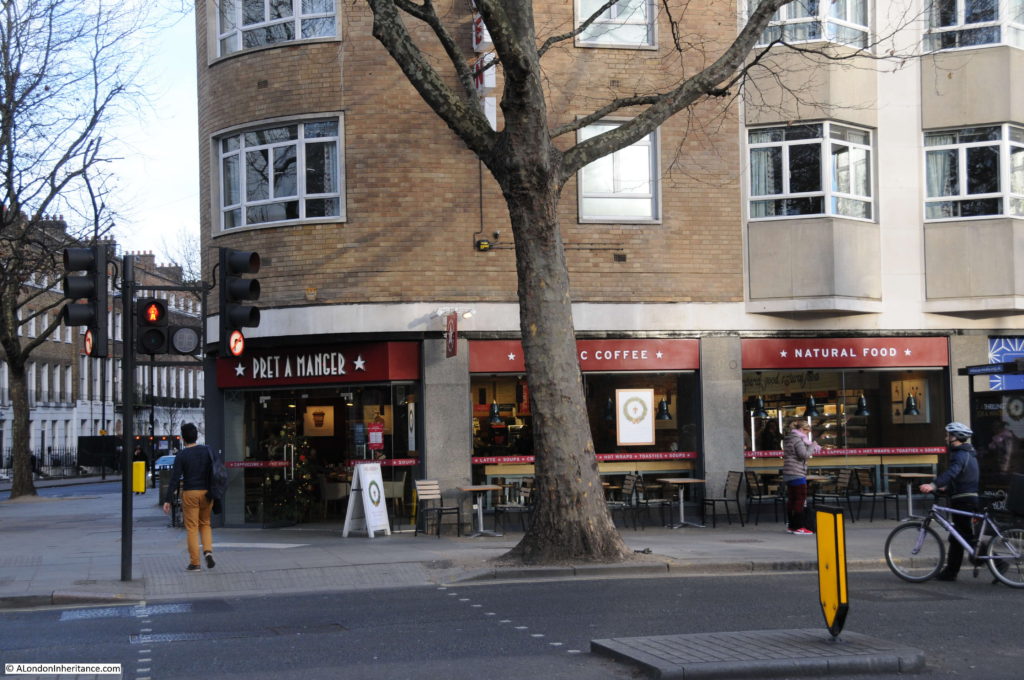

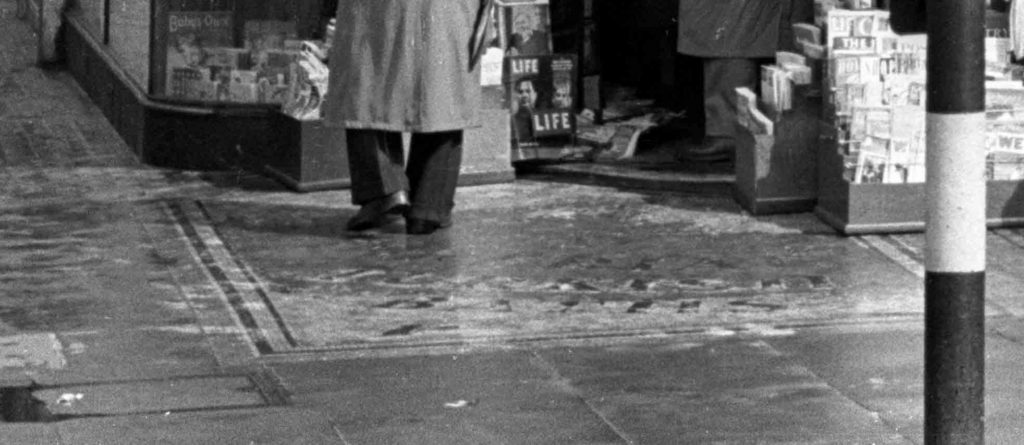
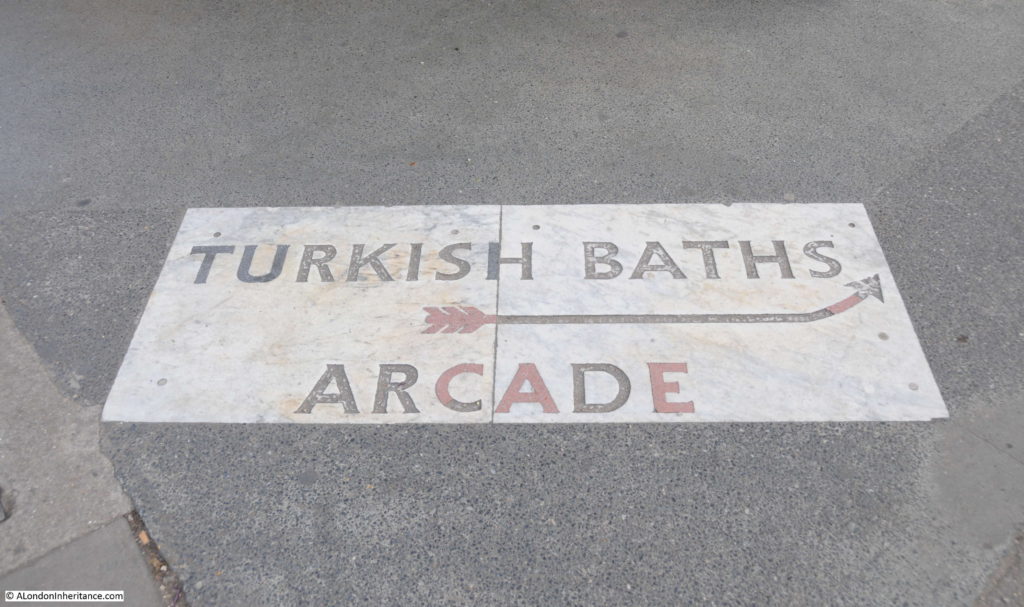
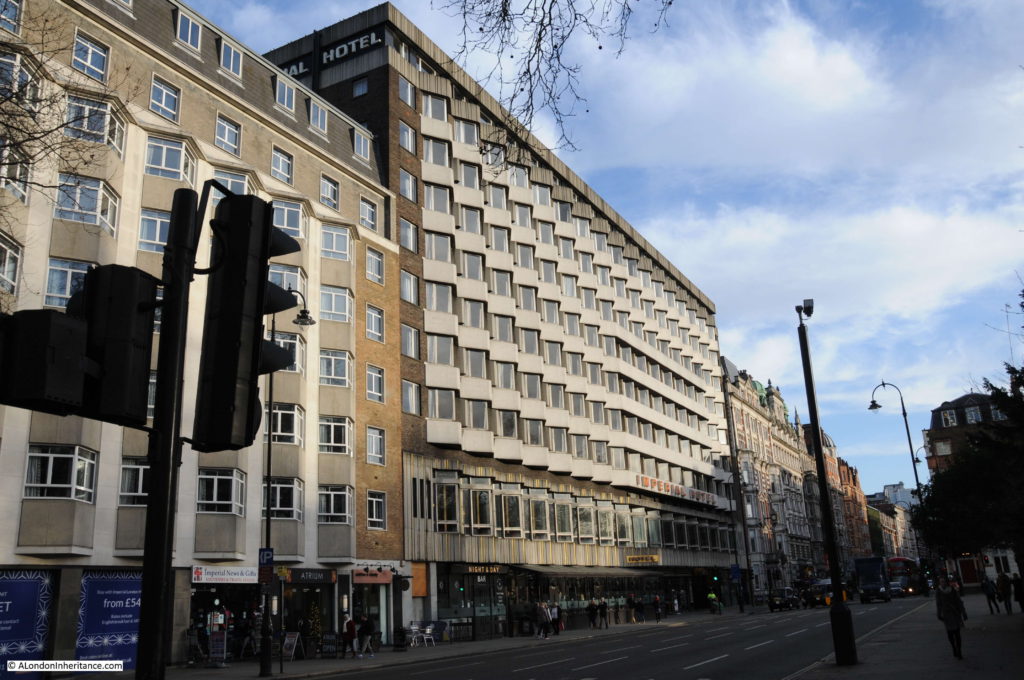


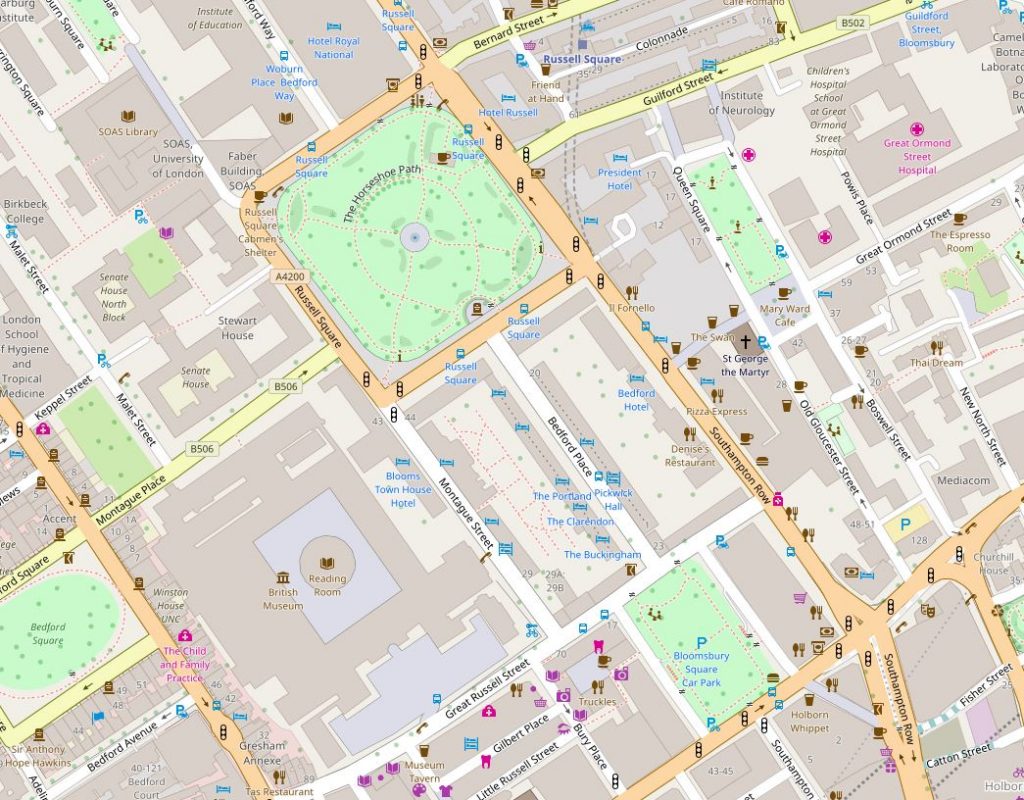
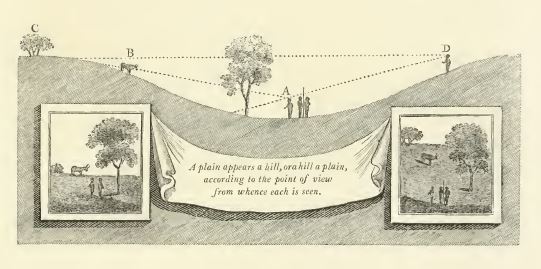


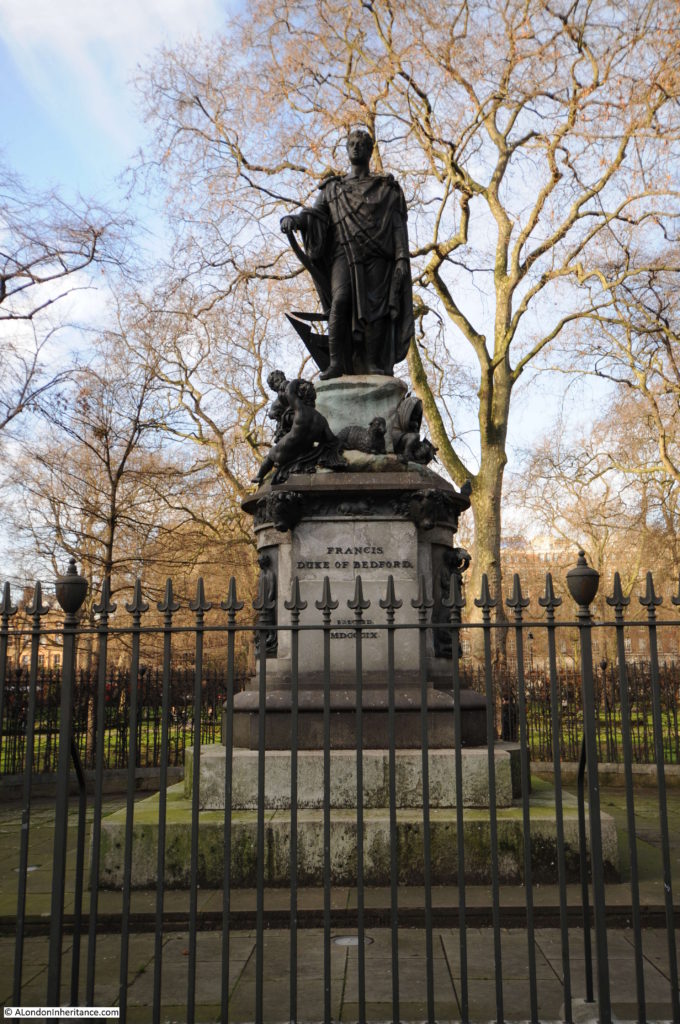



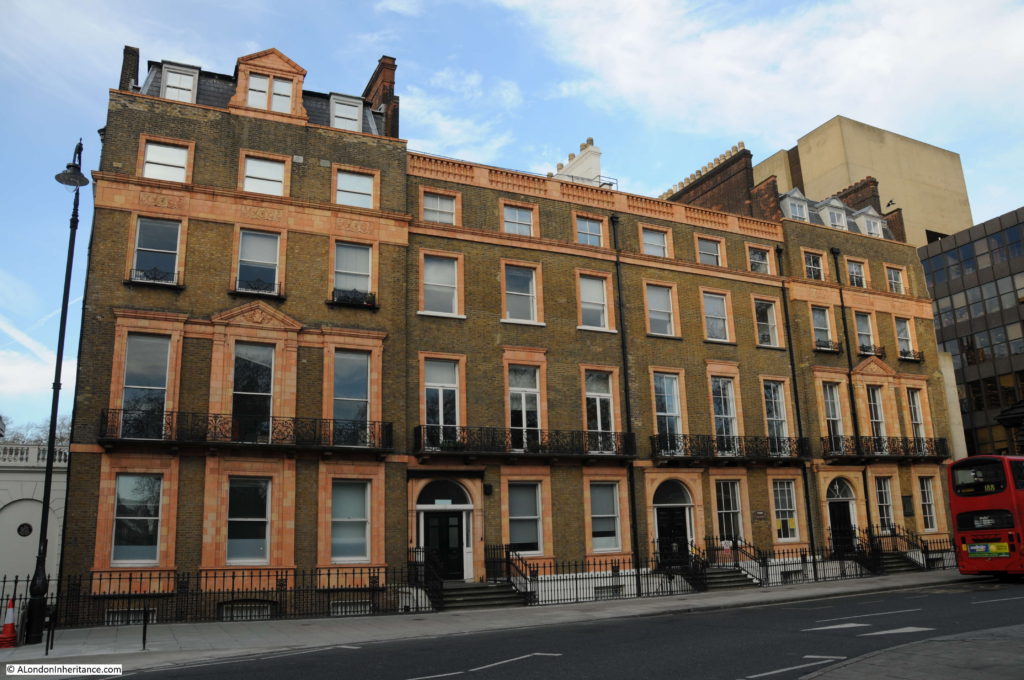

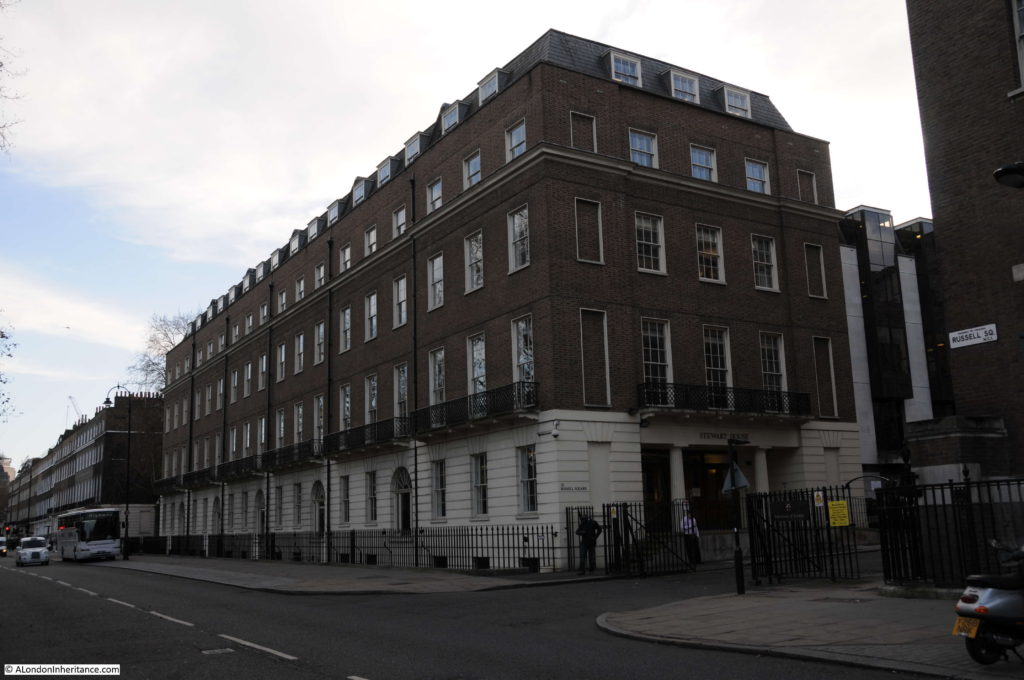

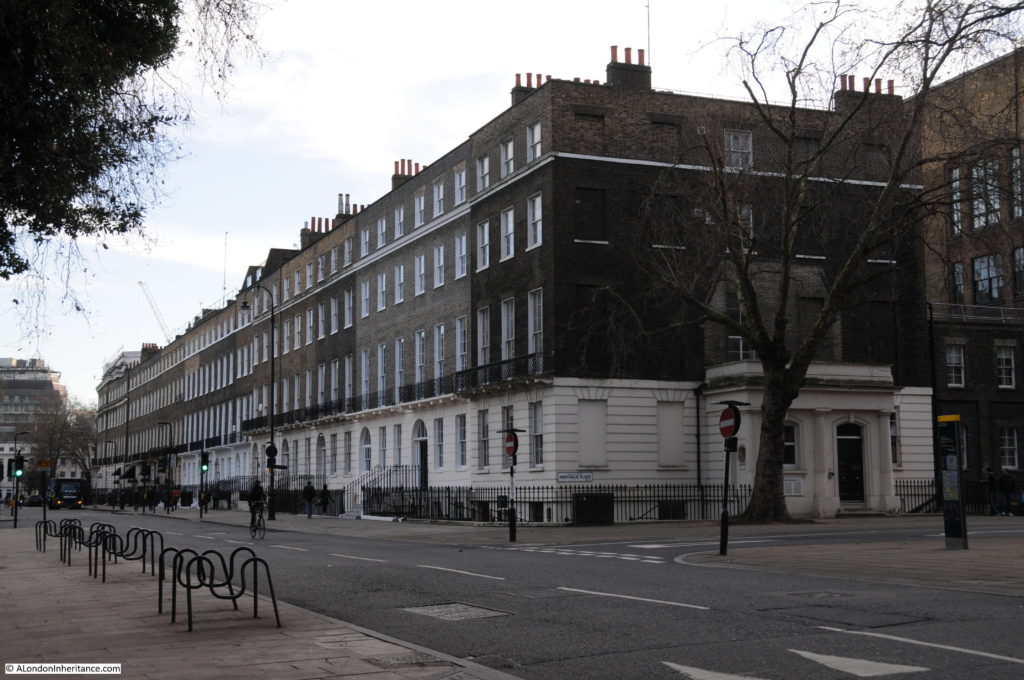

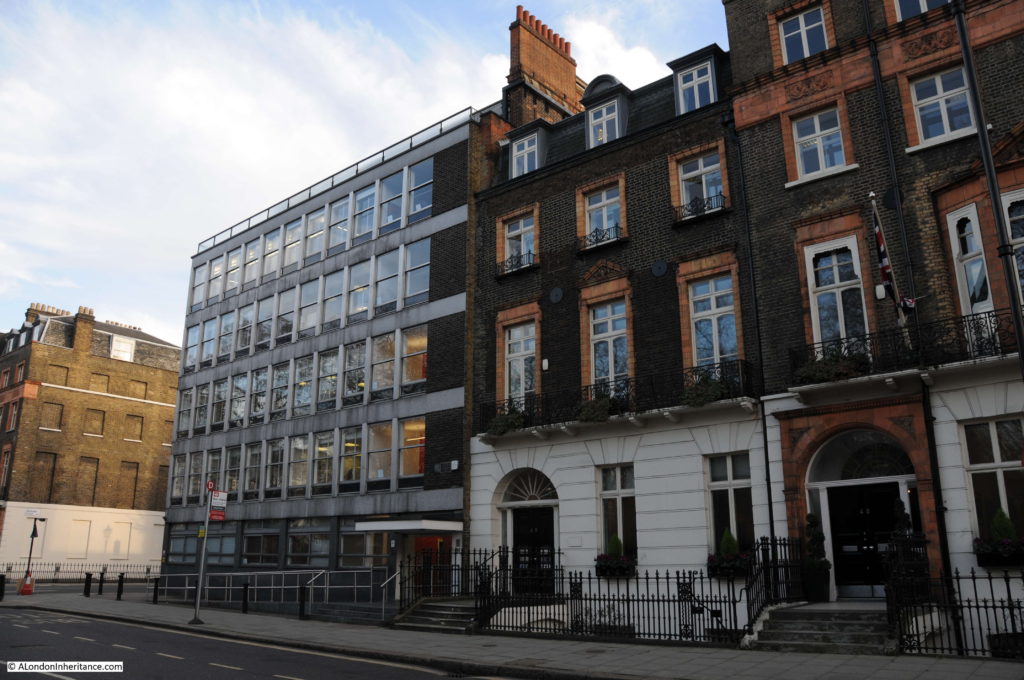

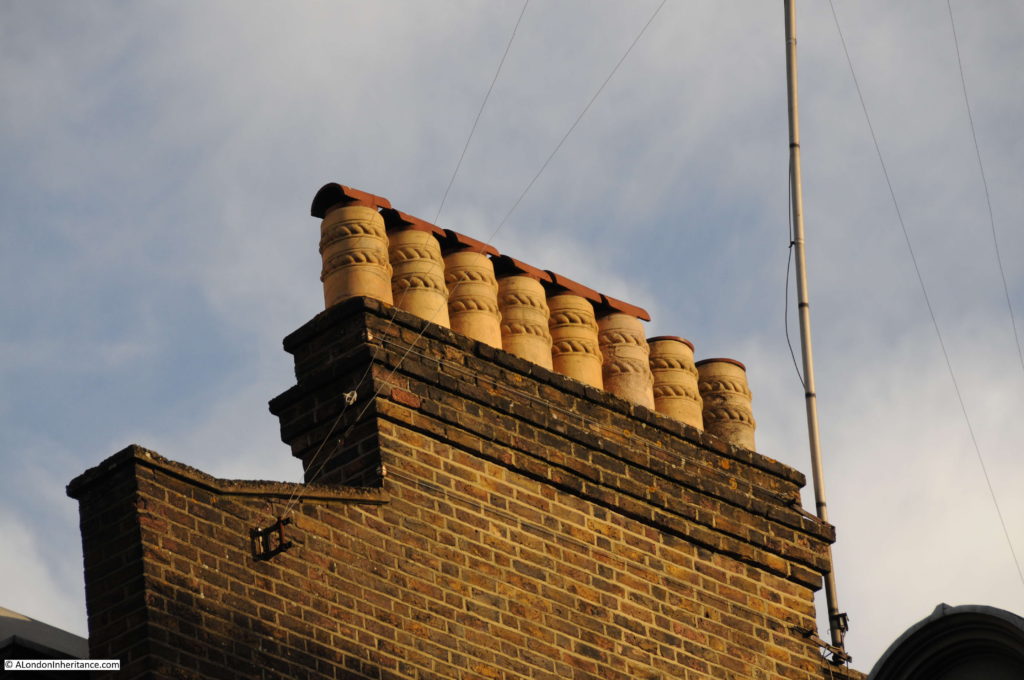
It was run by E.P. Mehinick? see:
https://books.google.com/books?id=q5PoAAAAMAAJ&q=%2273+russell+square%22+librairie+internationale&dq=%2273+russell+square%22+librairie+internationale&hl=en&sa=X&ved=0ahUKEwjEqovZi7LRAhXL6yYKHTrYCssQ6AEIMzAF
https://books.google.com/books?id=XaXnCgAAQBAJ&pg=PA132&lpg=PA132&dq=73+Russell+Square+was+the+Librairie+Internationale&source=bl&ots=H4X-rB9ZgL&sig=WV3JJObIphAz_XKplSJdnkOYYSI&hl=en&sa=X&ved=0ahUKEwitjtbyibLRAhUHLSYKHVPgAV4Q6AEIHzAA#v=onepage&q=73%20Russell%20Square%20was%20the%20Librairie%20Internationale&f=false
https://books.google.com/books?id=E4nPAAAAMAAJ&q=e+p+mehinick+73+russell+square&dq=e+p+mehinick+73+russell+square&hl=en&sa=X&ved=0ahUKEwjNmbWCi7LRAhXKMyYKHTHUBJ0Q6AEIJDAB
https://books.google.com/books?id=2PkDAQAAIAAJ&q=%2273+russell+square%22&dq=%2273+russell+square%22&hl=en&sa=X&ved=0ahUKEwjNvq-vi7LRAhXLQSYKHXnODMAQ6AEIVDAN
Thanks for this – I tried a number of Google searches but did not come up with these links. Thanks.
Edward Menhinick (1868-1942) was a bookseller and stationer at least from 1900. His son Edward Basil was also a stationer but I don’t know if he took over running the Librairie Internationale. Presumably he did as it was called E.P. Menhinick & Sons. Menhinick lived in Streatham and later in Golders Green. He purchased the Bureau de Change bookselling business in Victoria in 1913.
Matthew – thanks for the information, some fascinating links which I will use to update the post. Thanks
Many thanks for this – I live very close by (in Gray’s Inn) and so your article was of great interest.
The quote from Freedom in 1931 is amazing – it could have come from The Observer this morning.
Best wishes
David
For more details about Russell Square, local author, Ricci de Freitas, has recently published a lavishly illustrated book telling the intriguing story of Bloomsbury’s foremost Georgian garden square, “From Fields to Fountains”, published by the Marchmont Association, London, 2016.
Peter, thanks for the pointer to the book. I see that Skoob Books stock copies, will buy one when I am next in the area.
Thanks for a very interesting post. I really enjoyed exploring this area with you.
The Times of 1/2/1935 reported on a case in which Gladys Marie, the Duchess of Marlborough, claimed damages from a number of defendants for circulating a libel. “Mr Theobald Matthew, for Librairie Internationale [of Russell Square, W.C.], said that his clients expressed their regret as soon as the libel was brought to their attention and they now offered a sincere and unqualified apology to the Duchess.” Polite radicals indeed!
Rob, that is a fascinating find in The Times. It was strange reading through Freedom – all very genteel and polite, nothing that I would expect from an anarchist organisation.
Short biography on Nannie Florence Dryhurst: https://libcom.org/history/dryhurst-nannie-florence-1856-1930. She sounds like an interesting woman. And, as usual, a fascinating story culled from your family’s photos. Always a great read and may the new year bring you good health and continued success. Cheers from Vancouver!
Betty, thanks for the link. She does indeed sound like an interesting woman. That highlights my problem with the blog, so many interesting leads come out of one photo that I feel I do not do them sufficient justice and only provide an overview. Good to know that I have a reader in Vancouver.
Thanks for publishing the photos of the ‘Turkish Baths’ corner. We’d already stretched our definition of a ‘memorial’ and published that sign on our website. But your photos prompted us to do some more research, trying to understand the history of the site and to find out exactly where the Baths and the Arcade were. With the info from your photos and some maps we’ve got a bit closer: https://www.londonremembers.com/memorials/turkish-baths-in-russell-square
I do not think you have stretched the definition of a memorial too far as the sign is now the only memorial to the lost Turkish baths so very valid for London Remembers. Interesting additional information you have discovered. The map is interesting, I usually check with the NLS maps but did not do so for this post. I find that once I start looking at these maps I spend far too much time browsing across London.
Great post concerning an area I know shamefully little about. I am always on my way to somewhere else if I find myself in Bloomsbury though I do like to go and take a look at the wall sign with pointy finger in Mecklenburgh Square…simple pleasure.
Although I live many miles away, in the sleepy Lake District, I have many fond memories of being taken to London on family holidays and marvelling at such different architecture, the vibrancy of city life and, what still fascinates me, the way the city has evolved, adapted and changed.
Thank you for your passion to document all of this. Your newsletters are a highlight in my email inbox!
As interesting as ever. My eye was taken by the Imperial Hotel. The maginificent edifice dating from the early 20th century was itself a replacement of a previous incarnation. My 4x great-uncle, George Heald, wrote a letter from the Imperial Hotel in 1846 to George Mould in the Railway Office, Carlisle concerning the costings of the new railway that Heald was being asked to engineer between Skipton and Lancaster. Heald travelled the length and breadth of the country and stayed in the best hotels as might be expected for such a prominent engineer. His story is on Wikipedia. Mould was another pioneer of railways who lived longer than Heald (1816-1858) and built some of the main railways in Spain
That’s a curious piece of street furniture outside the Librairie. A striped pole with a single directional light unit. Clearly it’s not a Belisha beacon. A green light for pedestrians probably, but we don’t see any matching controlling lights for the traffic. In 1953 was traffic really heavy enough around Russell Square and along Southampton Row to warrant a set of lights there?
Hello, Pete.
Along with Tottenham Court Road, which runs more or less parallel with it, the route Kingsway – Southampton Row – Russell Square – Woburn Place – Tavistock Square – Woburn Place was a broad, direct and relatively fast route from South of the Thames, and from the very centre of London, to Euston Road, which bore, then as now, the three great railway termini of Euston, St Pancras and Kings Cross, and to all points North. Consequently, the traffic included many railway vehicles, other freight lorries, taxis, and the frequent Nos. 68, 77, 77A, 77B, 77C, 188 and 196 bus-routes. The vicinity of Russell Square was also full of tourist hotels, bringing many taxis and coaches into the area. So, yes, the traffic was quite heavy, even in the 1950s, and as the area was also residential, with many shops along Southampton Row, therewasa lot of pedestrian traffic. While I don’t remember the signal myself, I suspect that it may have been linked to the traffic lights at the top of Guildford Street, to control pedestrians crossing the main road from the square.
In fact there are several curiosities in that lovely photo. One or two shop units back from the Librairie we see a sign advertising “Lal Jolly’s Chutney Curry and Pickles”. The Russell Square Stores to the right has a telephone number with the exchange TEMple. And from the angle of shadows cast by the sun we may deduce that the photo was taken in the mid-afternoon.
A reflection in an upper window shows a bare-branched tree in the square. So perhaps November 1953? I’m not sure that there would have been a display of the Queen’s pictures at the other end of that year. Well it’s fun to guess anyway.
Following up on a likely time frame for the photo, Life magazine front covers can be browsed online. The cover shown at floor level by the bookshop’s front door is from 16 March 1953. The two faces are Malenkov and Stalin.
I worked at the British Library 1979-85. The west side of Russell Square in 1979 was a vacant site as the Georgian houses had been demolished in the 1960s for an extension to Senate House. There had been an extended pause before building began, by which time the attitude of the planners to London’s Georgian squares had changed. As a result, the proposed modernist building for that site was refused planning permission and the University was told to build a replica of the lost Georgian facades, if I remember about 1982 or so.They are vaguely convincing in summer but in winter, when the lights inside are on, you can see the they are just dolls house facades fronting a concrete building with open plan offices and strip lights inside
Interesting to note the building to the left of the new 1960s Imperial Hotel with the triangular projecting bay-windows was built *before* the new hotel. I’d always assumed the smaller building had been built later and was intended to echo the similar frontage of the hotel. The original Imperial Hotel must have been quite a sight to behold, it makes Charles Fitzroy Doll’s nearby building, the Waterstones on Gower Street, seem fairly tame by comparison!
Yes, the old Imperial really was palatial. I don’t think that I was ever inside it, But I saw it every day and, I’m afraid, took it for granted, although I remember being impressed that its green railings bore an IH cypher, every few feet, in gold, red, blue and green.
The Waterston’s shop in Gower Street, at the foot of the building extravagantly adorned with the motto “Che Sera”, used to belong to Kegan Paul, who sold textbooks of every kind and, I think, drawing materials as well. In 1946, a young RAF intelligence officer, a specialist in oriental languages, went to the shop to replace his English-Japanese dictionary, which had been consumed by white ants while he was stationed in Rangoon. He was served by a young woman whom he decided to invite to dinner. In due course they married; my brother, my sister and I were the eventual happy results. Che Sera.
I am new to this site and was very interested to read the report on Russell Square, I dont remember the shop on the corner of Guildford St and Southampton Row, which as you say is now a prets. I was brought up just around the corner in Brunswick Square and remember the Turkish Baths. My mother and grandmother would often frequent them. I seem to remember they were along Guildford St near to the Queens Square entrance. I lived in a georgian house on the west side in the sixties, my grandparents ran it as an hotel. The University of London took over another side for student accomodation and the other side is now the school of Pharmacy. Where our house stood is now the Brunswick a glass and cocrete block. Ricci De FReitas wrote a book “tales of Brunswick Square” and I have written a bit at the back, about my time living in the Square.
Thanks for this. The building with the Romilly plaque used to house part of the School of Slavonic and East European Studies of the University of London. I studied there in the mid 1970s. Now part of UCL. By that time the main bookshop for Russian (and other Slavonic?) studies was Collets, near the British Museum. The only source of Soviet-published material. And always a healthy stock of unsold ‘Soviet Weekly’!
Hello.
Further to your request for information regarding the Librairie Internationale bookshop in Russell Square, I lived with my family at 21, Bedford Way. My late sister and I attended the St George The Martyr Infant and Junior Schools, in Old Gloucester Street, close enough to home to return for lunch, and so we had the great good fortune to pass through Russell Square four times every day.
I remember first in about 1952 our mother taking my sister and me to the bookshop to buy our weekly reading material. At first, when we were toddlers, it was a publication that I believe was called “Sunny Stories”, from which we moved up to the “Dandy”, “Beano”, “Topper”, and “Beezer”.
The shop was a newsagent and bookshop, was quite dark inside, had lots of stock, and was run by a gentleman who had a disabled (or possibly artificial) leg. Your excellent photos show the entrance to the shop framed with publications. In the present day when many of those who don’t steal feel somewhat besieged by those who do, it may be surprising to know that a lot of small, central London shops, in those days, although long before the advent of security CCTV, displayed much of their stock outside, in places that were not always visible to the staff within; these included, in the nearby streets, bookshops both new and secondhand, newsagents, greengrocers, ironmongers, butchers and fishmongers.
Then as now, the plethora of tourist hotels, large and small, in the vicinity, along with the British Museum, the University of London and the large hospitals around the corner in Queen’s Square and Great Ormond Street, created a demand for foreign language publications. Newsagents would frequently display titles including “Die Weld”, “Der Spiegel”, “Le Figaro”, “Le Monde”, and so on, clipped to wire frames that hung from their doorways.
The bookshop went one better by having a wooden plank laid upon two or three bricks (easily acquired from the many nearby bomb-sites in those post-war days), upon the pavement alongside its Russell Square window, upon which were displayed, in small, overlapping piles, many different comics, along with other periodicals, each pile having a half-brick on top, to anchor it in the wind.
When buying our comics, we would follow the proprietor outside, where he would bend from the waist, take the corner of a comic between thumb and forefinger, and, with a sudden flick of the wrist and a small flourish, slip the publication neatly out of its pile, disturbing neither the half-brick above nor the remaining comics below. This small act of legerdemain never failed to delight us, especially as he would repeat it for each of our other comics, adding so much extra pleasure to the anticipation and joy of our acquisitions.
I’m afraid that I don’t know what political fare the bookshop may have offered for sale; we were quite content with Desperate Dan and Dennis The Menace.
The bookshop was demolished, along with the other shops in that terrace and, I think, the florist’s shop in Guildford Street, in the late 1950s, to make way for the President Hotel.